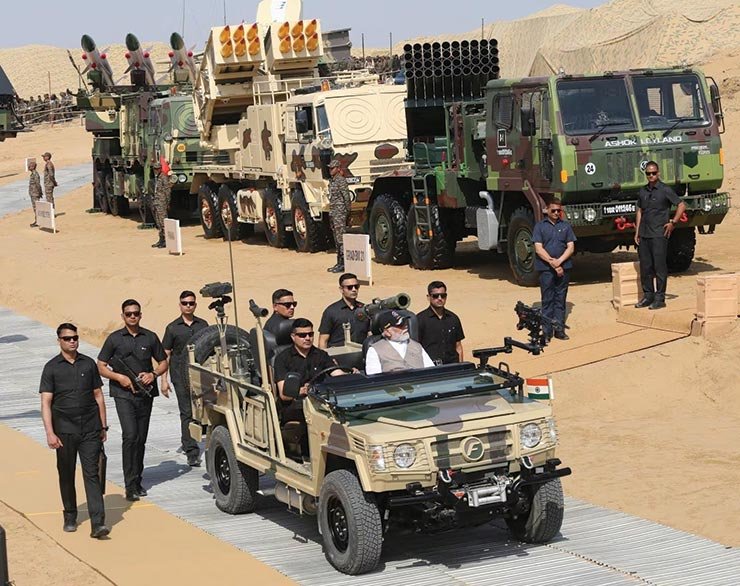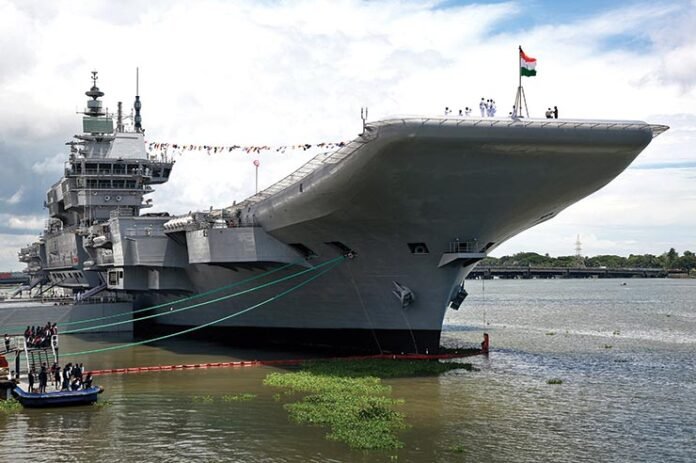India’s journey toward self-reliance in defence technology and manufacturing, or ‘aatmanirbharta’, is making significant strides. The most recent testament of this is the BrahMos supersonic cruise missile, developed jointly by India and Russia, manufactured in India, and now exported to the Philippines. The making of INS Vikrant, which gave the country entry into an elite group of nations who have indigenously built an aircraft carrier, is another recent example.
As India aims to become a major player in the global defence market, it is crucial to develop a set of indigenous quality standards that rival global benchmarks and gain international acceptance.
Benefits of a Basket of Standards
A standardised quality framework in defence manufacturing offers numerous advantages. For starters, standardisation ensures that all equipment and systems meet high-quality benchmarks. This consistency reduces the risk of failures and increases the reliability of defence technologies. This is also extremely important in light of the increased push for privatisation, where mass production of technologies in various locations by various manufacturers could soon become the norm in India.
It would boost the confidence of both domestic forces and international buyers in Indian-made defence equipment. After all, equipment and systems developed to internationally recognised standards are widely accepted globally, facilitating international sales and cooperation. For interested countries, they would also become easy to compare. Global acceptance is key to establishing India as a reputable defence exporter and strengthening its strategic partnerships worldwide.
There is a cost angle as well. Common standards help streamline procurement processes, reduce duplication of effort, and lower costs through economies of scale. For India, developing a standardised quality framework can lead to increased cost-competitiveness in the global market.
Additionally, by adhering to common standards, military forces from different countries can collaborate more effectively, when manufacturing and maintenance become international. For India, this means that its defence equipment can seamlessly integrate with those of its allies, facilitating smoother and more coordinated efforts in multinational exercises and missions.
The importance of quality standards is clear, but why do we need indigenous standards? Can’t we just use the already established global ones?
By adhering to common standards, military forces from different countries can collaborate more effectively, when manufacturing and maintenance becomes international
The Need for Indigenous Standards
While global standards ensure consistency, reliability, and safety, they may not always address the unique operational and budget needs of India and potential regional allies. Indian defence forces operate in diverse and challenging environments, from the high-altitude Himalayas to dense forests and expansive coastlines. Indigenous standards can be tailored to these specific conditions more effectively than generic global standards.
Moreover, indigenous standards can consider the materials, technologies, and resources available within India, making them more practical and achievable. This localised approach ensures that standards are realistic and relevant to the Indian context.
Sovereignty and Strategic Independence
Developing indigenous quality standards is crucial for maintaining sovereignty and strategic independence. By creating and adhering to its own standards, India ensures that its national security needs are met without relying on external entities. This autonomy is vital for safeguarding national interests and reducing dependency on foreign suppliers.

Technological autonomy is another key benefit. Indigenous standards can foster innovation and advancements that align with India’s strategic interests and defence capabilities. This focus on local innovation can lead to the development of cutting-edge technologies uniquely suited to India’s defence needs.
Economic Considerations
Adapting global standards can sometimes be expensive, requiring the importation of specific technologies or materials. Indigenous standards can be more cost-effective by utilising local resources and reducing dependency on foreign suppliers. This approach not only saves costs but also promotes the growth of the domestic defence industry, creating a supportive environment for local manufacturers and encouraging investment.
Boosting the local defence industry is crucial for economic growth. A thriving domestic defence sector can create jobs, spur industrial development, and contribute significantly to the national economy. By developing and maintaining indigenous quality standards, India can create a predictable and supportive framework that benefits local manufacturers and the broader economy.
Compatibility and Export Potential
While global standards are essential for interoperability and market acceptance, indigenous standards can complement these by ensuring compatibility with specific allies and partners that India frequently collaborates with. This approach enhances operational efficiency in joint missions and exercises, facilitating stronger defence collaborations.
The Government of India’s Make in India Defence initiative has implemented various measures to ensure quality, including the establishment of standard operating procedures and stringent quality checks at different stages of manufacturing
Moreover, developing indigenous standards does not preclude compliance with global standards. Instead, it allows India to offer customised solutions that meet the specific needs of its export markets, providing a competitive edge. High-quality standards boost India’s reputation as a reliable defence equipment supplier, essential for building long-term strategic partnerships.
Lessons from NATO
NATO’s comprehensive set of standards serves as an inspiration for India’s efforts. NATO standards ensure interoperability among its members, creating a seamless operational environment. By establishing and rigorously maintaining its standards, NATO has set a benchmark for quality and reliability in defence manufacturing.
India can take a leaf out of NATO’s book by developing indigenous standards that not only meet but exceed global expectations. This would involve a continuous process of review and improvement, ensuring that Indian defence products remain competitive and reliable on the global stage.

India’s Current Initiatives
India has already made significant progress in establishing a framework for quality assurance in defence manufacturing:
- Make in India Defence Quality Assurance Initiatives: The Government of India’s Make in India Defence initiative has implemented various measures to ensure quality, including the establishment of standard operating procedures and stringent quality checks at different stages of manufacturing. These initiatives aim to create a robust quality assurance framework that supports the production of reliable defence equipment.
- Standardisation Directive for Defence: The Department of Defence Production, through the Directorate of Standardisation, has issued directives aimed at creating uniform standards across defence production. These directives help streamline processes and ensure the quality and reliability of defence products.
- Defence Testing Infrastructure Scheme (DTIS): The DTIS aims to set up Greenfield Defence Testing Infrastructure as a common facility under the private sector with the government’s assistance. This infrastructure will help in testing and certification, ensuring that products meet the highest quality standards before they reach the market.
–The writer is a Defence, Aerospace & Political Analyst based in Bengaluru. He is also Director of ADD Engineering Components, India, Pvt. Ltd, a subsidiary of ADD Engineering GmbH, Germany. He can be reached at: girishlinganna@gmail.com. The views expressed are of the writer and do not necessarily reflect the views of Raksha Anirveda
-The author is a Defence, Aerospace & Political Analyst based in Bengaluru. He is also Director of ADD Engineering Components, India, Pvt. Ltd, a subsidiary of ADD Engineering GmbH, Germany. You can reach him at: girishlinganna@gmail.com. The views expressed are personal and do not necessarily carry the views of Raksha Anirveda






